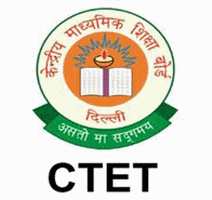Promotion of Central Government Employees – DOPT OM delays UPSC in conducting DPC
Promotion of Central Government Employees – Safeguarding the career prospect of Group A, Gr. B and Gr. C officers in all Central Govt. Departments by granting timely promotions
Central Government Gazetted Officers’ Organisation letter regarding promotion.
CONFEDERATION OF CENTRAL GOVERNMENT GAZETTED OFFICERS’ ORGANISATIONSConfederation/Corres/2016-17/16Dated: 20.03.2017ToDr.Jitendra Singh,Honourable Minister of State (Independent Charge),PMO & Development of North Eastern Region,Government of IndiaNew Delhi.Respected Sir,Sub: Safeguarding the career prospect of Group A, Gr. B and Gr. C officers in all Central Govt. Departments by granting timely promotions – request regarding.Kindly refer to the burgeoning impasse created in all Central Govt. Departments in respect of promotions in Gr. A, Gr. B and Gr. C cadres following the DoPT OM dated 30.09.2016 on reservation.The process of holding DPC meetings for promotion from Gr. B to Gr. A cadres in all Departments was aborted by the UPSC immediately after the OM.No 36012/11/2016-Estt(Res) Government of India, Ministry of Personnel, Public Grievances and Pension Department of Personnel and Training dated 30.09.2016, in connection with the pending SLP/Contempt Petition in the case of Jarnail Singh vs Lachhmi Narain Gupta in the Hon’ble Supreme Court of India, was issued. The UPSC categorically refused to hold any DPC to any grade having reservation element, unless the said OM is further clarified by DoPT to its satisfaction. It is learnt that the UPSC had sought clarification from DoPT immediately after the issuance of the said OM, and that no clarification has so far been issued by the DoPT.As the UPSC is considered as the nodal agency for accepting various Instructions/OMs/Circulars issued by the Govt. of India time to time in relation to promotion and holds DPCs accordingly, the refusal of UPSC to hold DPC of any grade having reservation element unless the said OM is further clarified by DoPT has barred all cadre-controlling authorities in all Departments to hold DPCs for promotion in various Gr. B and Gr. C cadresAs a result, all regular promotions into Group A, Group B and Group C cadres all over the country have been stalled. As a matter of fact, as the cut-off date for counting of mandatory residency period in all cadres is fixed on 1st of April by the DoPT, the seniority and due career prospect of many officers/officials across various Departments would suffer irreparably if the normal promotion is not accorded to them on or before 31.03.2017. And if it happens, these unfortunate officers will lose at least one year for all consecutive promotions in their career for no fault of themselves.As per our understanding of the subject, until the DoPT issues clarification of the OM dated 30.09.2016 and help the UPSC to decide the future course of action in respect of promotions in Gr. B to Gr. A cadres in various Departments, neither the vacancy position at various levels in Departments would improve nor the career prospects of officers/officials would be protected.In view of the above, we are constrained to seek the intervention of the Hon. Minister in directing the DOPT to clarify the issues raised by the UPSC so that the promotions of Officers/Officials who serve the Government of India do not suffer unjustifiably.We do trust that the Honourable Minister will render justice to those who serve the Government of IndiaThanking You,Yours Sincerely,(S. Mohan)Secretary General
Read More ->>




















 →
→








